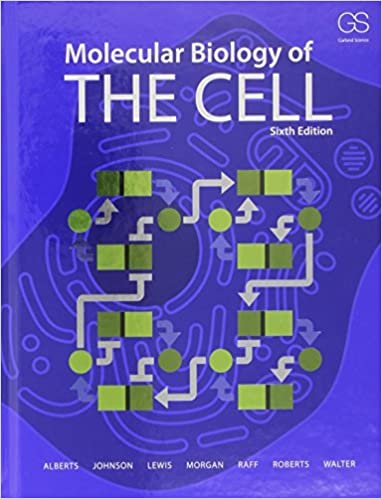
Molecular Biology Of The Cell 6th Edition by Bruce Alberts, Alexander Johnson, Julian Lewis, David Morgan, Martin Raff, Keith Roberts, Peter Walter
Edition 6ISBN: 978-0815345244
Molecular Biology Of The Cell 6th Edition by Bruce Alberts, Alexander Johnson, Julian Lewis, David Morgan, Martin Raff, Keith Roberts, Peter Walter
Edition 6ISBN: 978-0815345244 Exercise 10
It is not an easy matter to assign particular func- tions to specific components of the basal lamina, since the overall structure is a complicated composite material with both mechanical and signaling properties. Nidogen, for example, cross-links two central components of the basal lamina by binding to the laminin  chain and to type IV collagen. Given such a key role, it was surprising that mice with a homozygous knockout of the gene for nidogen-1 were entirely healthy, with no abnormal phe- notype. Similarly, mice homozygous for a knockout of the gene for nidogen-2 also appeared completely normal. By contrast, mice that were homozygous for a defined muta- tion in the gene for laminin
chain and to type IV collagen. Given such a key role, it was surprising that mice with a homozygous knockout of the gene for nidogen-1 were entirely healthy, with no abnormal phe- notype. Similarly, mice homozygous for a knockout of the gene for nidogen-2 also appeared completely normal. By contrast, mice that were homozygous for a defined muta- tion in the gene for laminin  which eliminated just the binding site for nidogen, died at birth with severe defects in lung and kidney formation. The mutant portion of the laminin
which eliminated just the binding site for nidogen, died at birth with severe defects in lung and kidney formation. The mutant portion of the laminin  chain is thought to have no other function than to bind nidogen, and does not affect laminin struc- ture or its ability to assemble into the basal lamin a. How would you explain these genetic observations, which are summarized in Table Q19-1? What would you predict would be the phenotype of a mouse that was homozygous for knockouts of both nidogen genes?
chain is thought to have no other function than to bind nidogen, and does not affect laminin struc- ture or its ability to assemble into the basal lamin a. How would you explain these genetic observations, which are summarized in Table Q19-1? What would you predict would be the phenotype of a mouse that was homozygous for knockouts of both nidogen genes? 
 chain and to type IV collagen. Given such a key role, it was surprising that mice with a homozygous knockout of the gene for nidogen-1 were entirely healthy, with no abnormal phe- notype. Similarly, mice homozygous for a knockout of the gene for nidogen-2 also appeared completely normal. By contrast, mice that were homozygous for a defined muta- tion in the gene for laminin
chain and to type IV collagen. Given such a key role, it was surprising that mice with a homozygous knockout of the gene for nidogen-1 were entirely healthy, with no abnormal phe- notype. Similarly, mice homozygous for a knockout of the gene for nidogen-2 also appeared completely normal. By contrast, mice that were homozygous for a defined muta- tion in the gene for laminin  which eliminated just the binding site for nidogen, died at birth with severe defects in lung and kidney formation. The mutant portion of the laminin
which eliminated just the binding site for nidogen, died at birth with severe defects in lung and kidney formation. The mutant portion of the laminin  chain is thought to have no other function than to bind nidogen, and does not affect laminin struc- ture or its ability to assemble into the basal lamin a. How would you explain these genetic observations, which are summarized in Table Q19-1? What would you predict would be the phenotype of a mouse that was homozygous for knockouts of both nidogen genes?
chain is thought to have no other function than to bind nidogen, and does not affect laminin struc- ture or its ability to assemble into the basal lamin a. How would you explain these genetic observations, which are summarized in Table Q19-1? What would you predict would be the phenotype of a mouse that was homozygous for knockouts of both nidogen genes? 
Explanation
The statement, "basal lamina of muscle f...
Molecular Biology Of The Cell 6th Edition by Bruce Alberts, Alexander Johnson, Julian Lewis, David Morgan, Martin Raff, Keith Roberts, Peter Walter
Why don’t you like this exercise?
Other Minimum 8 character and maximum 255 character
Character 255


